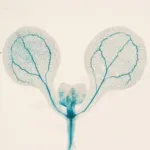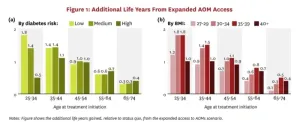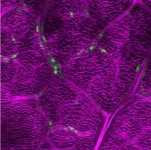(Press-News.org) 28 March 2024, Leuven, Belgium — Accumulation of a protein called TDP-43 is a key feature of ALS and frontotemporal dementia. In a newly published study, researchers report ‘seeding’ this accumulation through fragments of the culprit protein created in the lab. The findings provide further evidence for a prion-like paradigm wherein protein aggregation occurs in a templated fashion. This breakthrough provides the research field with a powerful way to model and study the mechanisms driving neurodegeneration.
TAR DNA-binding protein 43, better known as TDP-43, is a protein found in almost all human cells, where it plays essential roles in regulating gene expression, RNA processing, and cellular stress responses. Under normal conditions, TDP-43 helps maintain the health and function of neurons by controlling which genes are turned on or off and how their messages are translated into proteins.
However, TDP-43 is infamous for its role in several neurodegenerative diseases, including ALS and frontotemporal dementia, but also Alzheimer’s disease.
From the nucleus to the cytoplasm
“TDP-43 pathology is considered a defining feature in nearly all ALS cases and about half of frontotemporal dementia cases,” explains professor Sandrine Da Cruz, group leader at the VIB-KU Leuven Center for Brain & Disease Research. “In the brains of these patients, TDP-43 somehow mislocalizes, accumulates in the cytoplasm where it forms insoluble inclusions, and is depleted from the nucleus.”
Despite its critical role, the exact processes driving TDP-43 dysfunction remain poorly understood—an urgent gap that researchers like Da Cruz are actively working to fill. The havoc and widespread neuronal death that ensues following TDP-43 mislocalization is most likely due to a combination of both disruption of TDP-43’s normal activities within the nucleus as well as the toxic effect of the cytoplasmic inclusions.
“Part of the reason why the underlying mechanisms are still poorly understood is that we lack model systems that reliably recapitulate both the nuclear depletion of TDP-43 and its cytoplasmic aggregation,” says Da Cruz.
Seeds for aggregation
Building on recent reports that autopsied brain material from patients with TDP-43 inclusions can induce accumulation of insoluble TDP-43 in cells and transgenic mouse models, Da Cruz and her team sought a way to reproduce this so-called aggregation ‘seeding’ in the lab.
In a study recently published in Neuron, Da Cruz’s team describes how they produced amyloid-like fibrils from a fragment of TDP-43 and that these fibrils trigger TDP-43 pathology in human cells, including iPSC-derived neurons.
The fibril-induced inclusions recapitulate many of the key hallmarks seen in patients, explains PhD student Jens Rummens: “The TDP-43 aggregates induced by the fibrils exhibited many of the modifications we also see in patient brains, including phosphorylation and ubiquitination. Strikingly, the aggregates were able to recruit endogenous TDP-43 from the nucleus to the cytoplasm.”
The similarities extended to other downstream effects, as the team identified signature gene activity patterns that were previously linked to both aggregation and nuclear loss of TDP-43. The aggregates themselves exhibited the same heterogeneity in morphology as typically seen in patients over time.
Tool for research
The new results strongly suggest that pathology in TDP-43 proteinopathies propagates in a self-templating and prion-like fashion, but many questions remain unanswered. How is TDP-43 ‘trapped in the aggregates? What do they consist of and how do they trigger toxicity? Which additional ‘hits’ are required? What are the effects of TDP-43 mutations? Of age?
So perhaps most importantly, the new study provides scientists with the actual tools to study the different triggers and complex interplay in a controlled system.
Da Cruz: “We have developed a valuable model that displays both aspects of TDP-43 pathology—cytoplasmic aggregation and nuclear depletion. This will be a powerful asset to help researchers across the globe to further unravel TDP-43 induced disease mechanisms and enable us to screen potential drug candidates that modify disease progression.”
END
Scientists create protein ‘seeds’ that trigger key pathological features of ALS and frontotemporal dementia
2025-03-28
ELSE PRESS RELEASES FROM THIS DATE:
Discrimination-related depression, anxiety pronounced among multiracial, White, Asian populations
2025-03-28
EMBARGOED UNTIL 11 a.m. EST on Friday, March 28, 2025
Contact:
Jillian McKoy, jpmckoy@bu.edu
Michael Saunders, msaunder@bu.edu
##
Discrimination-related Depression, Anxiety Pronounced Among Multiracial, White, Asian Populations
A new study found that more than half of US adults encounter some form of discrimination, and that this mistreatment may fuel higher chances of depression and/or anxiety among specific racial and ethnic groups due to cultural, social, and systemic factors.
A ...
New approach makes one type of clean fuel production 66% more efficient
2025-03-28
COLUMBUS, Ohio – Researchers have uncovered a more efficient way to turn carbon dioxide into methanol, a type of alcohol that can serve as a cleaner alternative fuel.
In the lab, synthesizing methanol can be extremely difficult, due to the extremely complex reaction pathway needed to select for it. Previous attempts by the same team to manufacture this valuable liquid fuel from carbon dioxide have used a combination of cobalt phthalocyanine (CoPc) molecules and electricity, but this method is inefficient as only about 30% of the carbon dioxide is converted to methanol.
To ...
AI meets oncology: New model personalizes bladder cancer treatment
2025-03-28
Leveraging the power of AI and machine learning technologies, researchers at Weill Cornell Medicine developed a more effective model for predicting how patients with muscle-invasive bladder cancer will respond to chemotherapy. The model harnesses whole-slide tumor imaging data and gene expression analyses in a way that outperforms previous models using a single data type.
The study, published March 22 in npj Digital Medicine, identifies key genes and tumor characteristics that may determine treatment success. The ability to accurately anticipate ...
New approach could treat anthrax beyond the “point of no return”
2025-03-28
Anthrax, an infectious disease caused by the bacterium Bacillus anthracis, is often treatable in its early stages. But once the disease has progressed beyond the “point of no return” after just a few days, patients are almost certainly doomed.
In a new Nature Microbiology study, University of Pittsburgh researchers show that a cocktail of growth factors reversed would-be lethal cell damage in mice with anthrax, suggesting that this approach could be adapted for use in patients beyond the brink.
“While only a few people die from anthrax in the United States each year, there is always the concern ...
Those constantly distracted by their phone will just find other ways to procrastinate if it isn’t nearby
2025-03-28
If you just put away your phone to read this, chances are you’re not alone. Our phones are an endless source of distraction, and we interact with them every four to six minutes. This is often driven by habit as well as notifications, leading to a disrupted flow of activity while we’re trying to be productive.
A new study published in Frontiers in Computer Science investigated if placing smartphones just out of our reach while we’re at work influenced device use for activities not related ...
Ottoman Empire’s religious ‘tolerance’ another form of control
2025-03-28
Population surveillance. The carrying of identification while traveling. Add to that the public presence of diverse religions and it sounds like 2025, but this was life in the Ottoman Empire 200 years ago. Yet this seeming tolerance of non-Muslim faiths was in fact tied to the first two aspects, according to research by Osaka Metropolitan University Associate Professor Masayuki Ueno.
The Ottoman Empire lasted from around 1300 until 1922, and at various points in its history ruled present-day Turkey, Egypt, Greece, Hungary, and beyond. In the wake of the 1821 Greek revolt, the Ottoman Empire instituted ...
Smartphone bans alone fail to equip children for healthy use of technology
2025-03-27
Banning smartphone and social media access alone fails to equip children for healthy use of technology, argues a group of international experts in The BMJ today.
They say the focus should shift to a rights based approach, underpinned by age appropriate design and education, that protects children from harm while developing skills to help them participate in a digital society.
Bans on smartphone and social media access have been advocated in many countries to protect children from harm despite ...
Discovery of novel small compounds that delay flowering in plants
2025-03-27
Ikoma, Japan—In an era where climate change threatens food security, scientists worldwide are searching for reliable ways to improve crop production. Extreme weather and shifting seasonal patterns can disrupt traditional agricultural cycles, making technologies that regulate the timing of plant growth invaluable for farmers worldwide.
Plant growth and development are dependent on many factors such as the environment, photoperiod, and genetics. Flowering is an important event in a plant’s life ...
Expanding access to anti-obesity medications delivers 13% return on investment for society
2025-03-27
A new USC Schaeffer Center white paper finds expanded access to anti-obesity medications would lead to significant increases in life expectancy and disease-free years while generating a substantial societal return on investment, even after accounting for treatment costs.
More than 4 in 10 U.S. adults have obesity, which is linked to increased risk of over 200 diseases — including heart disease, diabetes, cancer and dementia — and costs society $260 billion annually to treat. Highly effective new anti-obesity medications can be a powerful tool against chronic disease, but fewer than one-third of health insurers cover them amid concerns about upfront ...
Genetic defense breakthrough: plants repurpose stomatal genes to fend off herbivores
2025-03-27
Ikoma, Japan—Throughout evolution, plants have continuously adapted to survive in changing environments. Apart from complex structural changes, plants have also developed various defense strategies against herbivores, including tougher protective layers, thorns, and chemical deterrents. Delving deeper into the evolution of defense mechanisms, a research team led by Assistant Professor Makoto Shirakawa from Nara Institute of Science and Technology (NAIST), identified a surprising genetic adaptation in the Brassicales plant order. In these cruciferous ...




